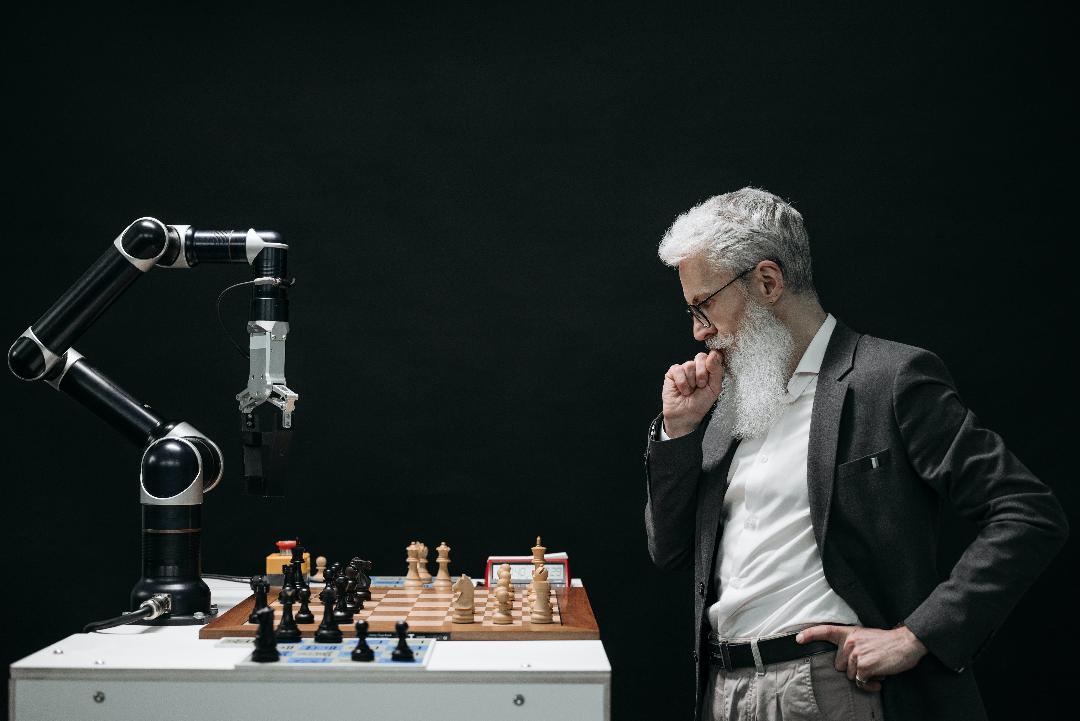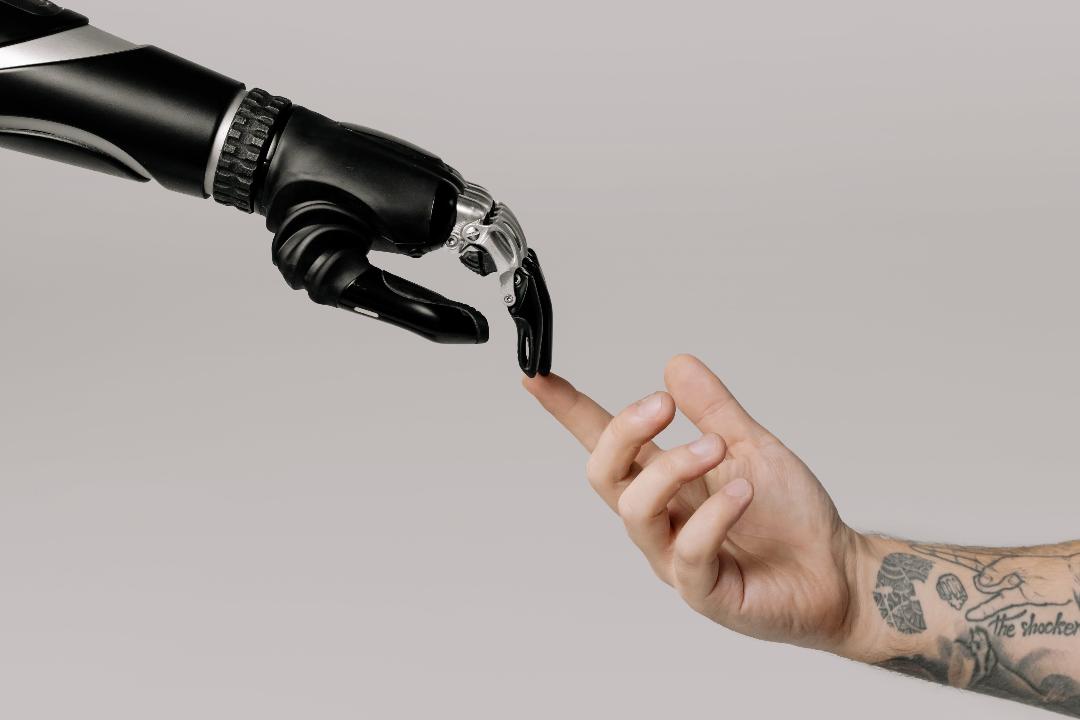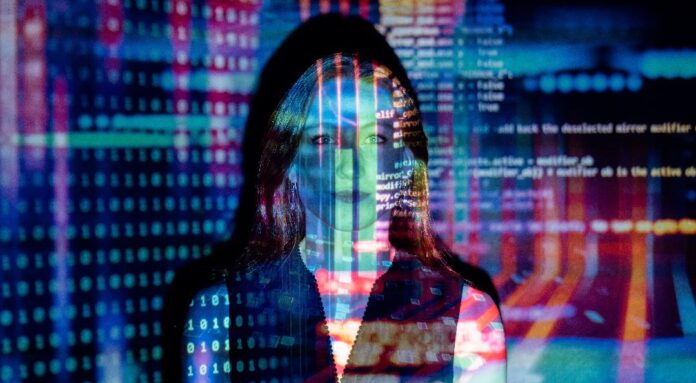Βy Anastasia Aleiferi,
From the beginning of time, humans have created tools to ensure their survival and facilitate their lives. Technology has been an indispensable part of the human existence. Since the internet and computers have entered our daily lives, humans have access to all the available knowledge of the world and can do some simple daily tasks through the comfort of their home. After the pandemic, with the use of technology and A.I., many tasks became automated and we have witnessed many considerable jumps in technological advancement. Now A.I. has become more sophisticated and it impacts modern society in a more profound way than what we realise. Now, because of all the developments that have been achieved, a lot of questions have been raised: with super A.I. being now something attainable, we, as a species, where are we heading? What is our future?
First of all, it is important to understand what A.I. is. Artificial Intelligence (A.I.), is an innovative and transformative technology that refers to developing computer systems that are capable of performing tasks that typically require the indulgence of human intelligence, such as decision making, visual perception and speech recognition. The idea of A.I. existed since the birth of computers in 1950s, because with the creation of the computer, scientists envisioned the creation of a machine so intelligent that it can have human like intellect. But in today’s society, as technology advances and A.I. becomes more elaborate it can impact modern society in a more immediate way. For example, in the matter of decision making, business owners can take better decisions for a specific aspect of their business by having the machine analyse the data and create patterns to make the process easier and faster. Also, in the matter of education, A.I. programs help students learn faster and specialise depending on their needs. So, now the question is about superintelligence or super A.I. Artificial superintelligence (A.S.I.) is defined as a form of A.I. capable of surpassing human intelligence by manifesting cognitive skills and developing thinking skills. Scientists that specialise on the field of machine intelligence originally estimated that A.S.I. is decades away, but in 2023 with the rhythms that the field has evolved, that estimation has changed. Now, scientists believe that A.S.I. is going to be a reality within the next 10 years.

How is an A.I. program created? When building A.I. programs, we feed the machine with data. That data can be anything depending on the task we want it to perform. So, the more data we present to the machine, the more program that runs it can become intelligent in order to perform a specific task. Also, by making the computer program to go through all the training data, it can create its own algorithm and do the task on its own without the human input. Now most A.I. programs are trained using data that is accessed through the Internet. That means that the programs can use anything that has existed on the internet to train themselves in astronomical speed and surpass the human limitations. All these mean that A.I. can be more sufficient than a human to do certain jobs, such as customer service, cyber security and marketing. In general, it can speed up different types of processes and can cater to specific needs.
Today, with the tempo that the field is evolving, we already have seen some primitive examples of A.S.I. in our lives, such as Tesla’s self-driving cars, Netflix’s automated recommendations, robotic personal assistants and chat bots. This continuous learning process is crucial for the development of human-like intelligence, so that the A.I. programs can continue to obtain knowledge, adapt to different situations and evolve to different scenarios without specific programming. Essentially, A.S.I. will improve and develop as it learns. The potentials that A.S.I. provides are limitless and can revolutionise human life. And it is closer to becoming a reality than we think.
So, what do we do now? Are we forging a path where A.I. in all of its forms is used as a tool that does what we, humans, want it to do and pushes us forward to progress or is A.I. a doomsday call and the robots will take over the world? How do we, humans, protect ourselves from our own creation? What’s most important is for the owners and creators of A.I. software to understand the responsibility they have. But of course, the use of A.I. in a responsible and ethical manner is up for interpretation since they are subjective terms and everything is up to the discretion of each person. There are some A.I. companies and scientists that have already started to make programs and active efforts to protect people from the immediate impacts of A.I.

For example, in order to train and run A.I. programs there are a lot of negative impacts to the environment, so some A.I. scientists created a program that analyses how much energy and CO2 is produced when using each program, so the users can choose responsibly which programs they want to use or if they want to use them. Most of generative A.I. uses artists work to get trained so there is a program that allows artists to know if their work was used to train an A.I. program or is a part of the data that the program uses in order to file lawsuits against the companies that illegally used their work without their consent. Now, we try, as humans, to push the lawmakers to create regulations that can protect humans from the malevolent use of A.I. programs.
In conclusion, the future isn’t as black and white as we think it is. Human and technological evolution happens simultaneously. We cannot expect that A.I. programs have the possibility to become something isolated from the rest of the society. The people who are actually engaged with the development of the A.I. programs actually care about the impact their products have to society. So, I don’t necessarily fear the future that is to come, because we don’t create A.I. programs to achieve A.S.I. as an end by itself. The A.S.I. systems won’t be a threat to humanity as long as the people developing them embody human values, which for the machine knowledge, won’t be a goal that has to be achieved by any means necessary. Because the machine has the same values as us, we don’t have to always check it and its decisions. So, by value loading the machine with what we, humans, consider valuable or meaningful in different scenarios, we can prevent the A.S.I. from creating independent decisions just based on numbers, but also introduce ethics and values, so the behaviour can match ours and it can behave in what we can consider the most beneficial way in the indefinite future. Therefore, the more scientists and the people responsible can make a concrete plan for A.I. safety and solve the control problem in advance, the more prepared we can be for the future and A.S.I.
References
- Nick Bostrom. Superintelligence. Audible Studios on Brilliance Audio. Michigan. 2015.
- Max Tegmark. Life 3.0: Being Human in the Age of Artificial Intelligence. Random House Audio. Manhattan. 2017.
- What is artificial superintelligence? IBM. Available here
- What Is Super Artificial Intelligence (AI)? Definition, Threats, and Trends. spiceworks. Available here
- What is artificial superintelligence (ASI)? techtarget. Available here
- What is AI?: A human guide to artificial intelligence. zapier. Available here




